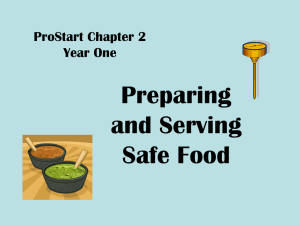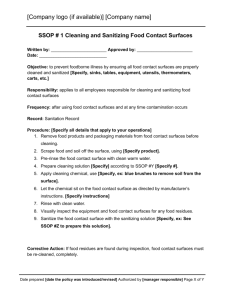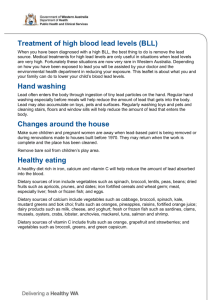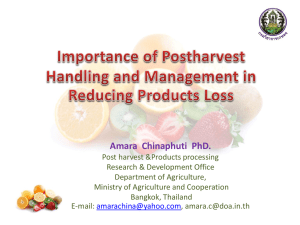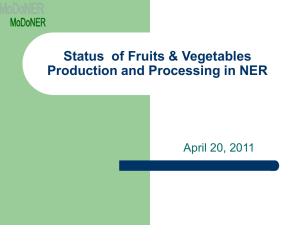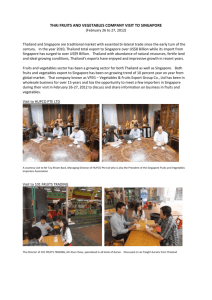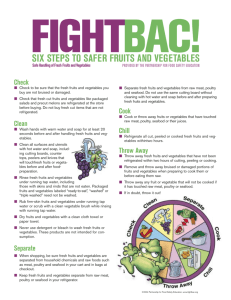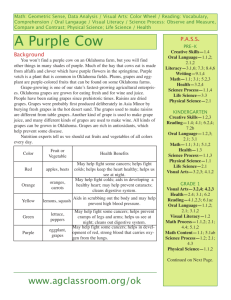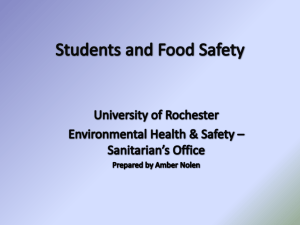Glossary
advertisement
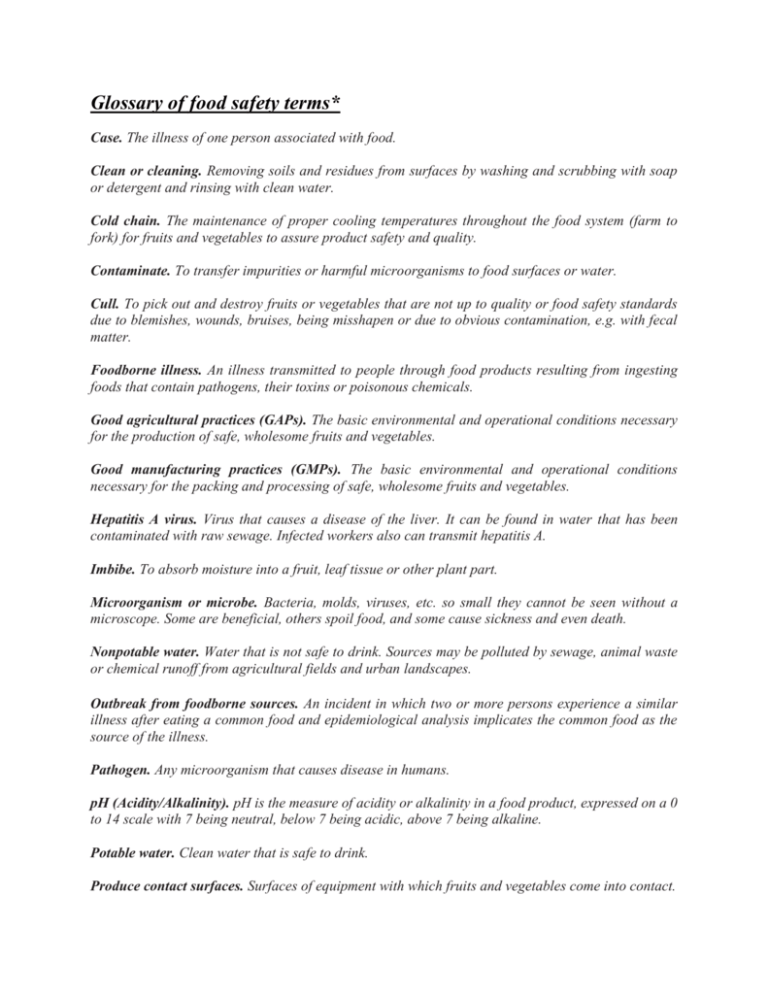
Glossary of food safety terms* Case. The illness of one person associated with food. Clean or cleaning. Removing soils and residues from surfaces by washing and scrubbing with soap or detergent and rinsing with clean water. Cold chain. The maintenance of proper cooling temperatures throughout the food system (farm to fork) for fruits and vegetables to assure product safety and quality. Contaminate. To transfer impurities or harmful microorganisms to food surfaces or water. Cull. To pick out and destroy fruits or vegetables that are not up to quality or food safety standards due to blemishes, wounds, bruises, being misshapen or due to obvious contamination, e.g. with fecal matter. Foodborne illness. An illness transmitted to people through food products resulting from ingesting foods that contain pathogens, their toxins or poisonous chemicals. Good agricultural practices (GAPs). The basic environmental and operational conditions necessary for the production of safe, wholesome fruits and vegetables. Good manufacturing practices (GMPs). The basic environmental and operational conditions necessary for the packing and processing of safe, wholesome fruits and vegetables. Hepatitis A virus. Virus that causes a disease of the liver. It can be found in water that has been contaminated with raw sewage. Infected workers also can transmit hepatitis A. Imbibe. To absorb moisture into a fruit, leaf tissue or other plant part. Microorganism or microbe. Bacteria, molds, viruses, etc. so small they cannot be seen without a microscope. Some are beneficial, others spoil food, and some cause sickness and even death. Nonpotable water. Water that is not safe to drink. Sources may be polluted by sewage, animal waste or chemical runoff from agricultural fields and urban landscapes. Outbreak from foodborne sources. An incident in which two or more persons experience a similar illness after eating a common food and epidemiological analysis implicates the common food as the source of the illness. Pathogen. Any microorganism that causes disease in humans. pH (Acidity/Alkalinity). pH is the measure of acidity or alkalinity in a food product, expressed on a 0 to 14 scale with 7 being neutral, below 7 being acidic, above 7 being alkaline. Potable water. Clean water that is safe to drink. Produce contact surfaces. Surfaces of equipment with which fruits and vegetables come into contact. Rinsing. Removal of residues, soil, grease, soap and detergents from surfaces by flushing with potable water. Sanitizer. A chemical compound designed to kill microorganisms. Two commonly used sanitizers are chlorine bleach and quaternary ammonium compounds (“quats”). Sanitizer solutions are made by mixing a measured amount of the sanitizer with potable water according to label directions. Sanitizing. Process to kill microorganisms. Includes rinsing, soaking, spraying or wiping the surface with a sanitizing solution. Surfaces should be properly washed and rinsed before they are sanitized. Total titratable chlorine. The amount of chlorine determined by an acidified starch iodide and thiosulfate titration. Traceback. Ability to trace a fruit or vegetable back to its field of origin. Washing. Removing all solid soil or food residues from surfaces by scrubbing with soap or detergent. *Glossary of food safety terms was taken from “Food Safety Begins on the Farm, A Grower’s Guide, Good Agricultural Practices for Fresh Fruits and Vegetables” by the Cooperative State Research, Education and Extension Service, USDA and FDA.
